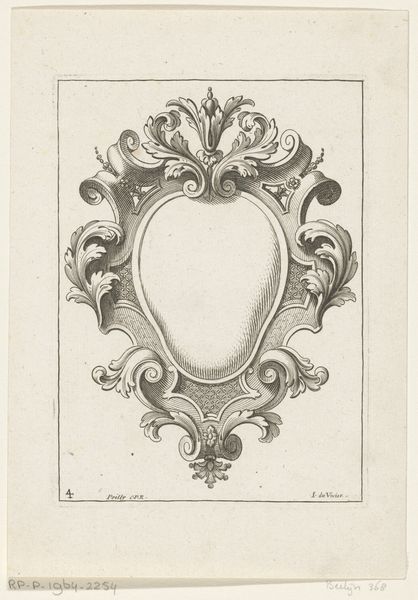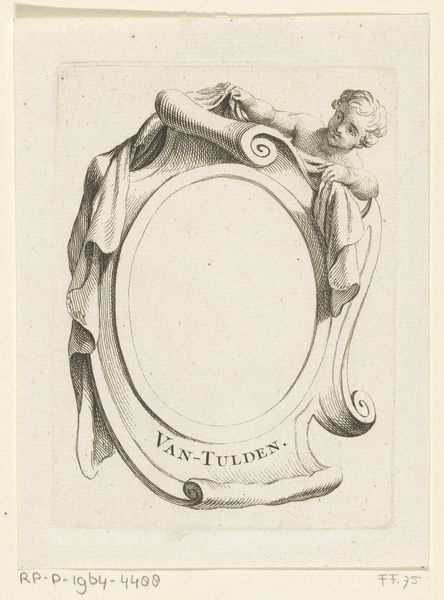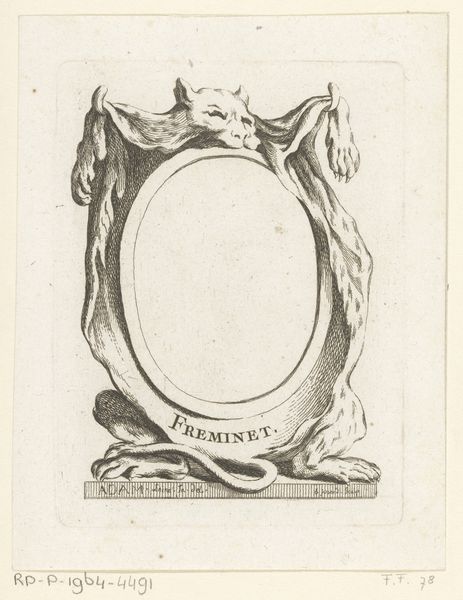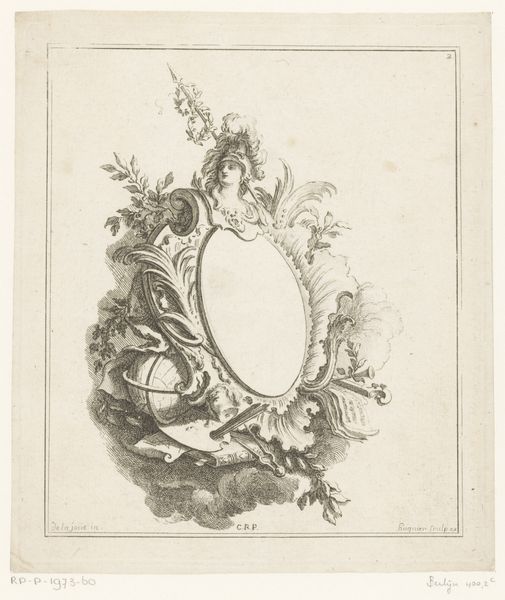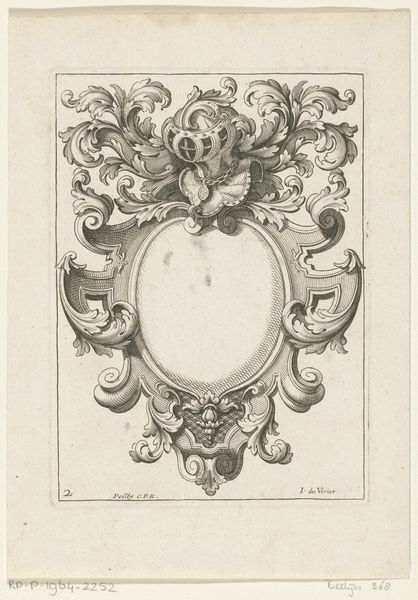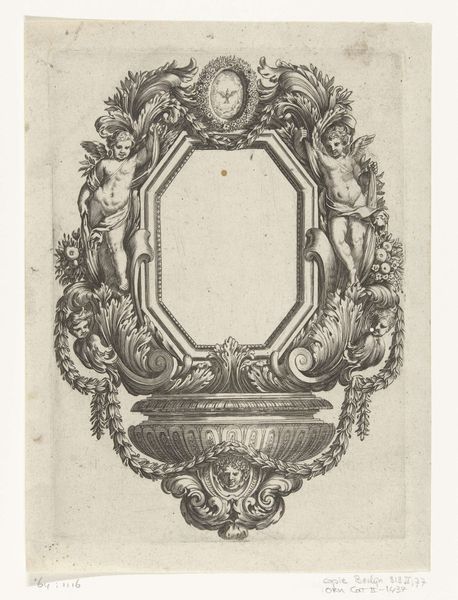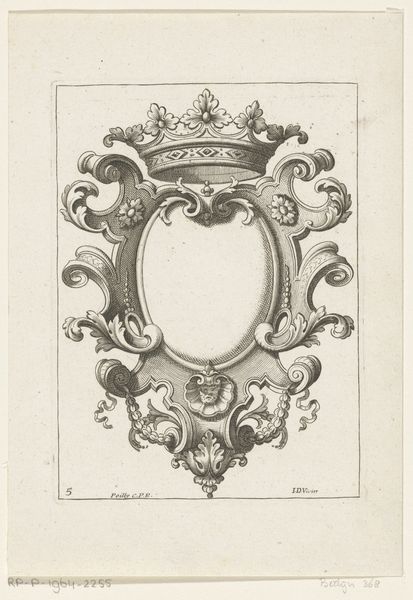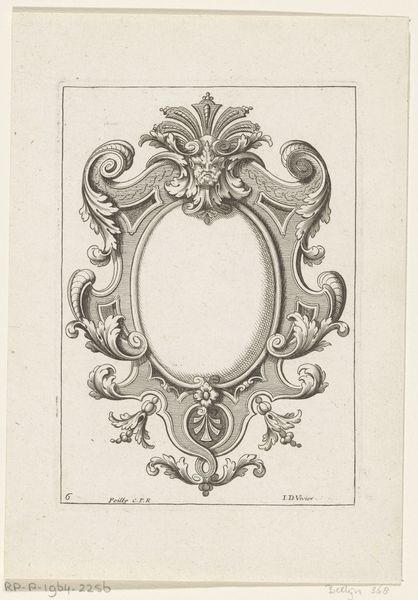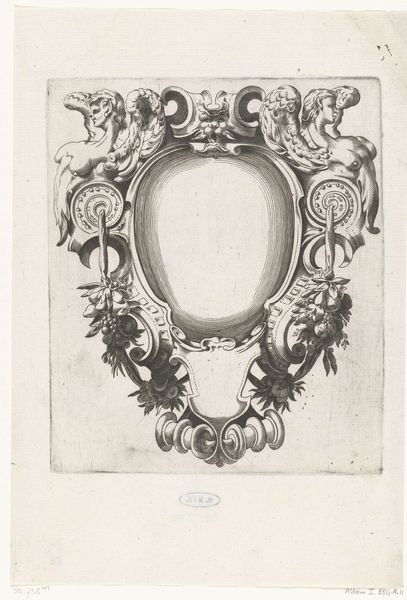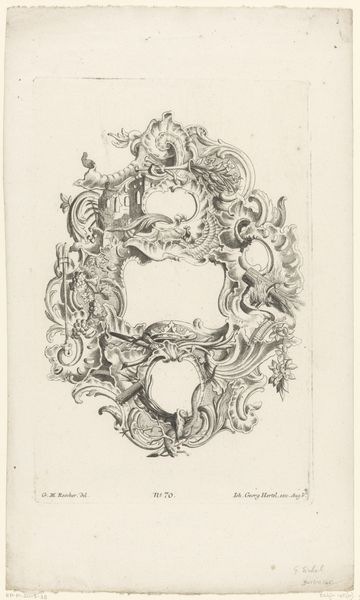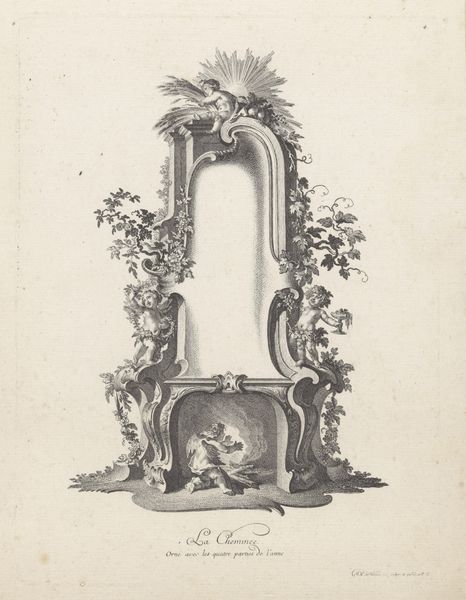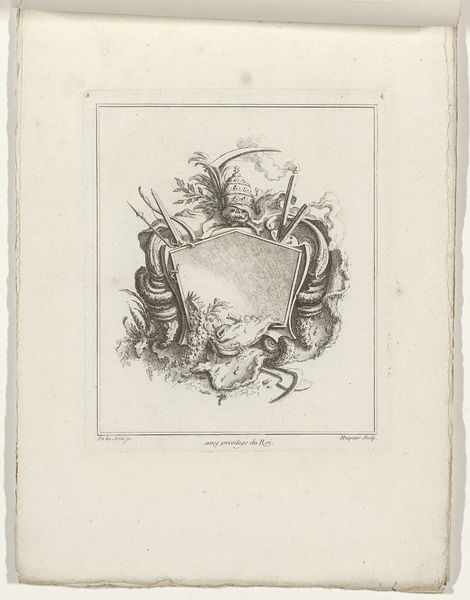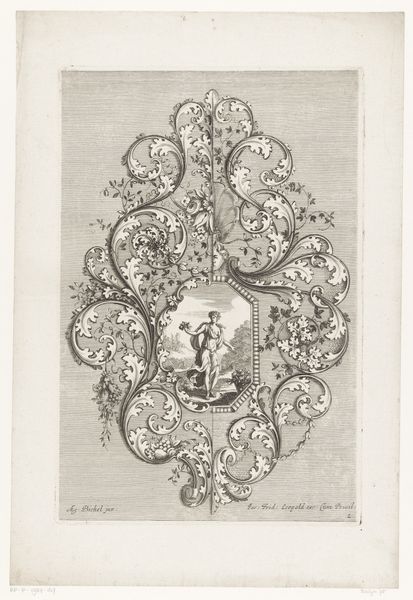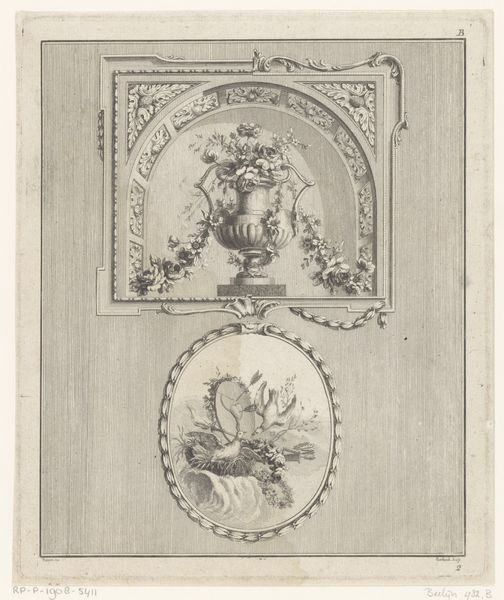
drawing, graphic-art, print, engraving
#
portrait
#
drawing
#
graphic-art
# print
#
line
#
decorative-art
#
engraving
#
rococo
Dimensions: height 119 mm, width 85 mm
Copyright: Rijks Museum: Open Domain
Curator: Welcome. Before us we have “Omlijsting voor Mignon,” an engraving, etching, and drypoint attributed to Etienne Fessard, dating from sometime between 1724 and 1777. It is currently held in the Rijksmuseum. Editor: It’s lovely, in a purely ornamental way. The delicate lines give it a frilly, almost fleeting quality, like something found pressed between the pages of an old romance novel. It does strike me as profoundly apolitical. Curator: Ah, but is that neutrality not itself a political stance, particularly when contextualized? We see the flourishes, the stylized ribboning and meticulously rendered floral arrangements—classic Rococo. The frame itself, with its empty oval, anticipates a portrait, but of whom, and for what purpose? Given that "mignon" translates to "cute" or "dainty," it possibly suggests societal expectations about desirability and idealized beauty, likely impacting women. Editor: Perhaps. Still, the artist’s skillful manipulation of line is undeniable. Notice the density of cross-hatching to create darker areas of shadow versus the sparse, almost ethereal lines that define the highlights. It shows a remarkable understanding of how light interacts with form, even within a monochrome palette. It feels like something I could analyze endlessly with a powerful magnifying glass. Curator: True, the technical skill is striking. But let’s consider the implications. During the Rococo era, portraiture often functioned as a marker of social status. The wealthy and privileged were able to circulate and perpetuate particular messages, with visual propaganda intended for political advantage. The lack of an actual image within the frame opens a curious possibility—inviting interpretation about absence, or perhaps an acknowledgement of widespread exclusions. Editor: So, are we suggesting that even something as seemingly innocent as a floral frame carries the weight of societal inequality? Or perhaps Fessard was just fulfilling a commission, devoid of radical intention? Curator: My point is that this engraving can, and should, be viewed beyond the purely aesthetic. While we admire Fessard’s craft, we should question the framework, literal and metaphorical, it presents and ask what values are prioritized through the visual language it speaks. Editor: A frame inviting not just appreciation, but critical inspection. I have a newfound appreciation for the humble "Omlijsting voor Mignon.” Curator: Indeed. Sometimes, the most potent statements are made on the periphery.
Comments
No comments
Be the first to comment and join the conversation on the ultimate creative platform.
